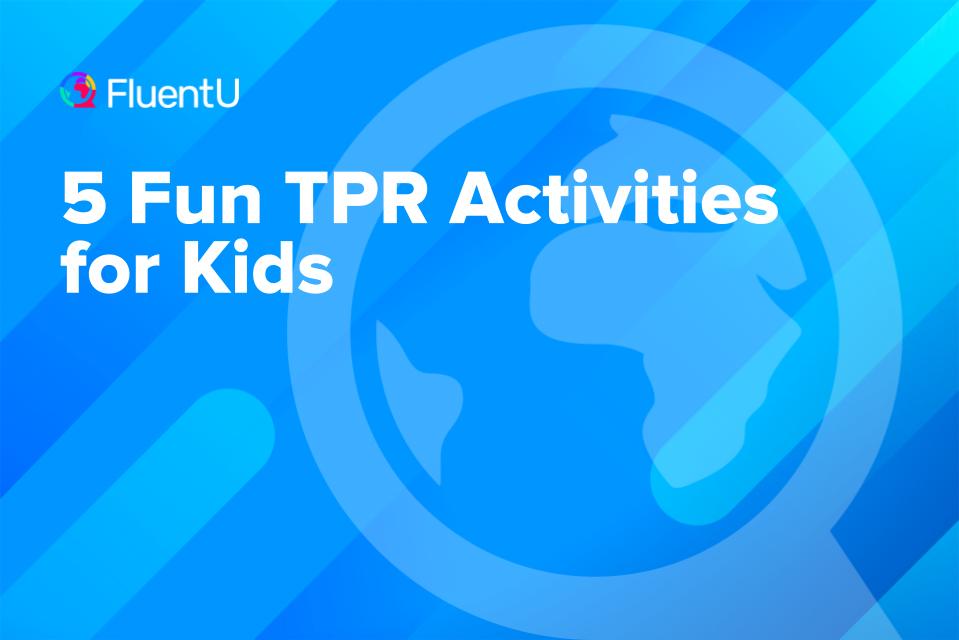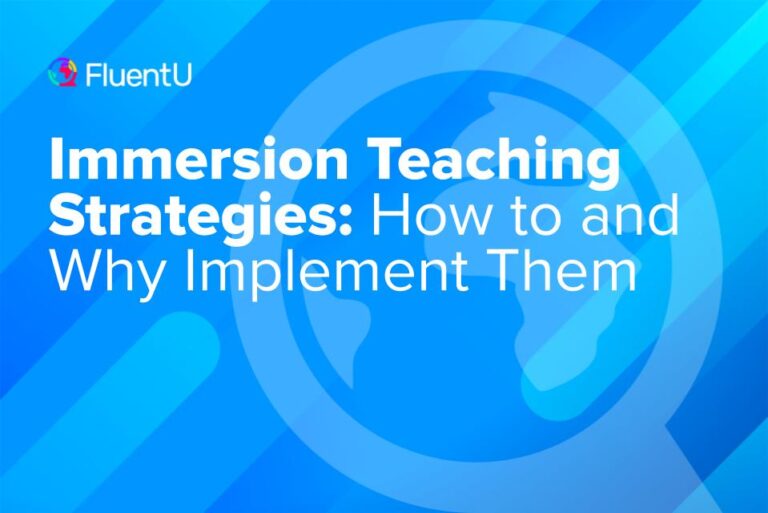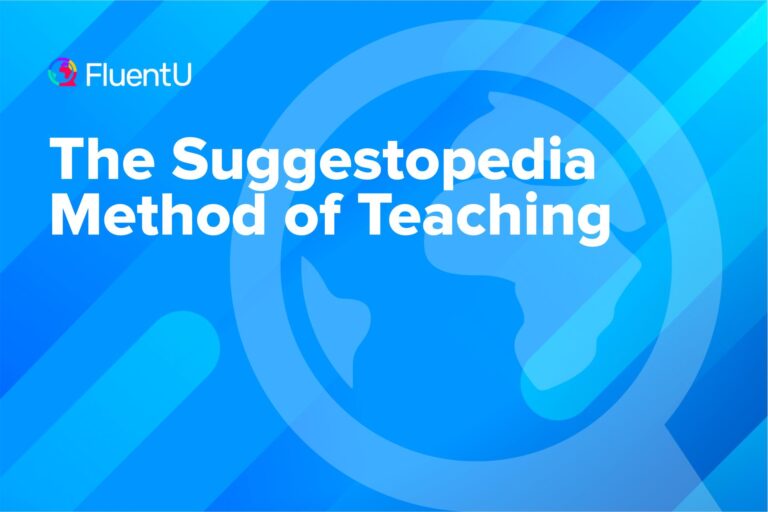5 Fun TPR Activities for Kids

Tired of telling your kids to sit down and use their indoor voices? Why not harness their energy and get them fully engaged in your lessons instead with Total Physical Response (TPR).
In this guide, I’ll share with you 5 great TPR activities for kids.
Download: This blog post is available as a convenient and portable PDF that you can take anywhere. Click here to get a copy. (Download)
1. Zumba Lingua!
Zumba has been dubbed as an “exercise in disguise.” Well, Zumba Lingua is a language exercise in disguise.
Use Zumba Lingua to lead the class in an aerobic routine that incorporates vocabulary lessons. You can use this as a culmination exercise that ties together different lessons on directions (left and right), numbers and body parts. So, make sure you have taught these and some other actions to the kids beforehand.
With that in mind, it’s time to create your own Zumba Lingua routine.
Don’t worry if you’ve never done this before. The routine can be as easy and as simple as you want it to be. You’ll just have to come prepared and be familiar with the routine before coming to class.
First, choose your music. You can find some great examples here.
Then determine the actions that will be involved in the routine. They can be as simple as marching in place, doing hand raises, punching left and right, stepping forwards and backwards or kicking left and right. If you want, you can mimic sport movements like swimming, skiing and shooting a 3-point shot. You can even add in some charades-like actions, having students act out “eat your dinner,” “wash the dishes” and “do a magic trick.”
Don’t forget to narrate during the routine. Count the numbers, shout the actions while you’re performing and repeating them. Encourage the kids to count with you, and be very encouraging of the great job they’re doing.
The kids don’t need to understand every little word you say in the target language, and you don’t have to talk for every little movement that you do, but you do have to emphasize the vocabulary lessons during the whole routine. Keep repeating the actions as well as the narrations.
2. Walk the Talk
This is a TPR game where you divide the class into two to three groups of equal number, then let the kids form a line.
Call the kids at the front of each line into a group huddle, and whisper into each ear some action-oriented instruction. Then send them back to their groups.
Shout “Walk the talk… go!” and the first student will pass your instructions down the line by whispering it to the student behind them. Then the second kid will pass it to the third kid, and so on and so forth.
The last person in the line runs to the front of the class and performs the action required. The team that performs the correct action first gets the point.
In this activity, everyone will have the chance to receive the message, pass the message along and, finally, act away—this is possible because in each subsequent round the teams rotate roles. The last person in line becomes the first, the first person in line drops down to the second spot, and so on.
Adjust the difficulty of the instructions according to the linguistic level of your wards. Be creative with your instructions, and you’ll be rewarded with a fun time watching your students come out of their shells. For example, tell them to, “dance the Running Man,” “sing ‘Call Me Maybe’,” “stand on one leg” or “draw your crush on the blackboard.”
You’ll notice that, while students are actively playing this game, your instructions will evolve as they pass from one student to the next, much like the classic game of “Telephone.”
After each round, try to reinforce the learning by reviewing and letting all the kids do the required action as a class.
3. Weird Vocabulary
One of the convictions of TPR is that, by pairing a certain vocabulary word with a certain movement, the memory of that word becomes stronger for students.
Weird Vocabulary is a TPR teaching technique where you use exaggerated or funny movements in order to make a word more memorable. First, you create a link between a word and a very specific movement. Then, you have your kids repeat the word and movement together. After that, you can try to always accompany that word with that movement in future classes.
“Movements,” in this case, can refer to hand gestures, body language, dance moves, eye movements, body orientation and facial expressions.
For example, a TPR-animated German lesson on the topic “occupations” might involve pairing a movement with each specific profession. A koch (chef), for example, could have this gesture. Every time you say “koch,” do the gesture. When the kids repeat after you, they should also be moving their arms and squinting their eyes accordingly.
Next, to make this even more interactive, you can lead some drills based on this. For example, you can do the chef gesture and have your kids shout out the profession—or alternatively, you can say “koch” and have the kids act it out.
It’ll be very obvious who still hasn’t fully gotten the lesson, because you’ll notice when your kids all jump to act, as well as when they hesitate or look around before moving. If there seems to be some confusion, repeat your words and movements again.
4. Boot Camp
This TPR activity is best done outside of class, perhaps on the playground or in the gymnasium.
Arrange your class into a small platoon, and play a drill sergeant who barks out orders aggressively yet humorously. Feel free to dress for the role, complete with whistle and hat. Treat your kids as new recruits, teaching them vocabulary through TPR, military style.
But hey, don’t be too hard on the class and expect military precision from your kids. Make it as fun as possible. Start with the basic facings and marchings to teach them “left,” “right,” “start” and “stop.”
Proceed with exercises, like doing jumping jacks and push ups, making sure to count in the target language and encouraging your kids to count with you. Don’t limit yourself to military commands. Increase the complexity of orders by commanding your platoon of cuteness to “raise your right hand,” “open your mouth,” “close your eyes,” “hug the person on your left” and so on.
You can also assign them tasks, like “pick up the leaves on the ground,” “pick up a rock,” “throw the trash into the bin” and “form one circle.” Make sure they keep marching and counting as they perform these tasks.
In Boot Camp, a proper context for the target vocabulary is created because they’re veiled as commands.
5. Imaginary Field Trip
If in the previous activity you were a drill sergeant, think of yourself as an “imagination director” for this one.
This is an imagination activity. You direct your students’ imaginations by setting the context and giving instructions as to how they’re going to act. Think of it as improv or live theater, where you give their stage instructions out in real time.
Let’s say you want to teach kids about different animal names in the target language. Have your kids take an imaginary field trip to the zoo!
Here’s what you could do: Choose three students to play “students visiting the zoo.” The rest of the class will be assigned different animals to play. You’ll have somebody play an elephant, a bird, a kangaroo or any other animal you want to discuss.
The activity beats looking at pictures of animals on slides. Because they’ll have the firsthand experience of moving among and sounding like an animal, their acquisition of the vocabulary will be much more efficient.
As you assign roles, tell the kids playing the animals what they need to do. For example, to the lion you say, “roar if somebody touches your head,” to the kangaroo, “jump once when a student takes your picture,” and to the horse you can say, “open your mouth when they feed you.” Then instruct the three kids you chose as zoo guests to do these exact things to the animals.
When you have given everyone their marching orders, shout “action!” This signal tells the whole class that they should do what you instructed them to do earlier.
Talk to the students during the whole activity, giving them instructions on what to do. You can even jump into the scene and give an example of how to act like an elephant! This will be a riot, so don’t expect your class to be docile creatures. They can really have fun with this, like touching and feeding the animals just to get some reactions. The kids, who have notorious imaginations anyway, will only be too happy to comply.
You can set different scenes for the class to suit the vocabulary you’d like to teach. You can have a vocabulary lesson targeting nouns, for example, by setting up a scene where your kids ply their wares as you instruct them to pick up and sell certain items that are targets of the vocabulary lesson.
What’s TPR and Why It’s Great for Teaching Kids
TPR is a second language teaching approach developed by Professor James Asher of San Jose State University in California.
The principles behind this teaching approach are simple yet effective, especially when it comes to teaching languages to children.
It’s action-oriented
The method is based on the coupling of language and physical movement. That is, language is learned through action-oriented commands that aid in linguistic comprehension.
Many kids love TPR because, instead of being told to sit still and be quiet, they’re being told to “jump, run and swim!” The kids, instead of passively listening to a lecture, often become actively engaged in the lesson.
It comes naturally to kids
Asher believes that the acquisition of a new language follows the same principles and processes involved in learning a first language.
When he closely observed parent-child interactions, he noticed that parents often talk to their kids with action-oriented phrases like “throw the ball,” “drop the stone,” “close your eyes.” Children then demonstrate their comprehension by performing the requested actions.
Asher modeled TPR on this simple, natural interaction.
It lets you lead the way
A TPR class is steep with drills. The teacher gives one command after the other.
Through direct observation, students initially learn the meaning of words. They reinforce this learning with action. Wondering how this actually plays out?
For example, to teach the word “jump,” you’ll initially perform the action while saying, “jump!” You’ll have to repeat the word while also repeating the action. (Jump! Jump! Jump!) Next, you’ll point to a student and ask her to do the same thing, “jump!” Inform the class that their classmate Erica jumped by saying, “she jumped!” Then ask the whole class to perform the action.
You can then build vocabulary phrases using the word. Try coming up with creative and novel combinations like “jump three times” or “jump high.”
With the use of direct observation, repetition and visceral firsthand experience, your students can rapidly learn the meaning of the word for “jump.” With the association of a physical action, linguistic memory will be enhanced.
It’s focused on comprehension
With TPR, comprehension comes before production.
Focusing on correctly-enunciated words and perfect grammar can be intimidating to kids of any age or skill level.
Before doing any drills on pronunciation and grammar, you can first use TPR activities to ascertain that the class has indeed understood the message that’s being communicated. (And this is very easily done by observing what actions are being performed in response to your prompts.)
There’s so much life in those kids, and TPR simply channels their energies in the most educational way.
Download: This blog post is available as a convenient and portable PDF that you can take anywhere. Click here to get a copy. (Download)







